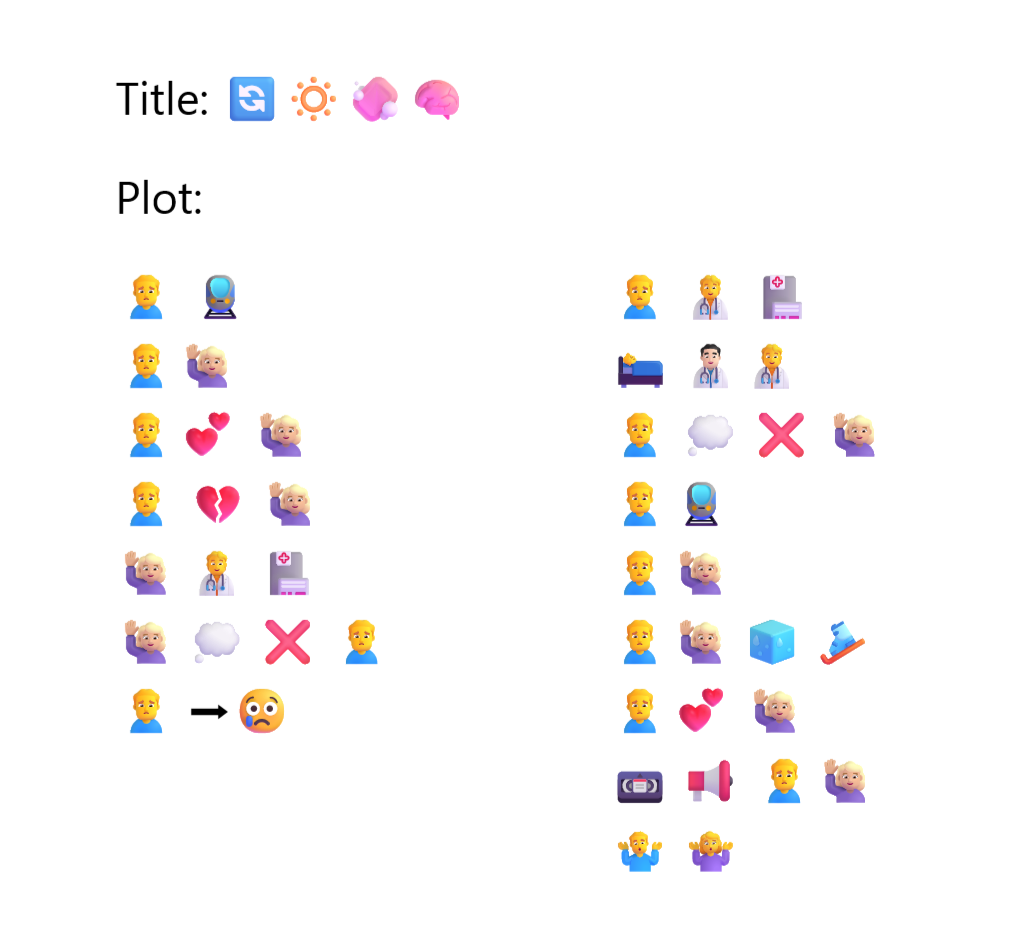
The ‘Writing’ Process
For the emoji story, I chose a movie that has a somewhat unconventional plot, partly to challenge myself, and partly to see how slightly abstract concepts might be translated into emojis. The film title is not descriptive, so the only way I could represent it is by selecting emojis that have a symbolic connection to individual content words. They are essentially graphic replacements of individual English words. Syntactic elements like prepositions and articles were left out because they provide little meaning to the reader.
The emojis used to describe the plot fell under a few different categories. Images of people represent characters, some objects represent locations/setting (train, hospital, ice), some represent emotion/thought (hearts, thought bubble), and others represent actions or change (arrow, red ‘X’). I chose to keep the character representations consistent by using the same emoji each time for a character. There are other character options in the emoji set, but they’re limited in customization, and I wanted to ensure the reader does not get confused by different characters. In a written description, a character’s name identifies them, but in the emoji story, the colors and expression ‘name’ the character and need to be consistent. The lack of customization also meant a lot of details were left out. The two main characters are represented by male and female emojis, yet the characters in the film have other important characteristics besides their gender. I wasn’t able to represent them due to the graphical restrictions of the task.
When crafting the plot, I had to consider the layout. Emojis are graphical representations which exist simultaneously in space. As Kress (2005) points out, graphics are spacial rather than temporal, so placement and relative position are critical in representing causal and sequential relationships. When we normally talk about film plots, we describe them from beginning to end, so the reader of my emoji story would likely expect the plot to be represented chronologically.
I attempted to show the order with two columns, meant to be read top to bottom and left to right. There is a large gap between the columns intended to guide the reader into the intended sequential order. Emojis are grouped in lines, suggesting each line represents a complete thought or action. The separation of lines suggests that each group of emojis is linked in a causal or temporal way with the one before and after it. In this sense, I’m borrowing heavily from text conventions which represent words in a similar way.
Readers who have seen the film I’m describing here will probably recognize that the plot is not told accurately. The film does not tell the story in chronological order and jumps around in time. I chose to “straighten out” the plot chronologically in my emoji description because i felt it would be too confusing otherwise.
Reference
Kress, G. (2005), Gains and losses: New forms of texts, knowledge, and learning. Computers and Composition, 2(1), 5-22. https://doi.org/10.1016/j.compcom.2004.12.004